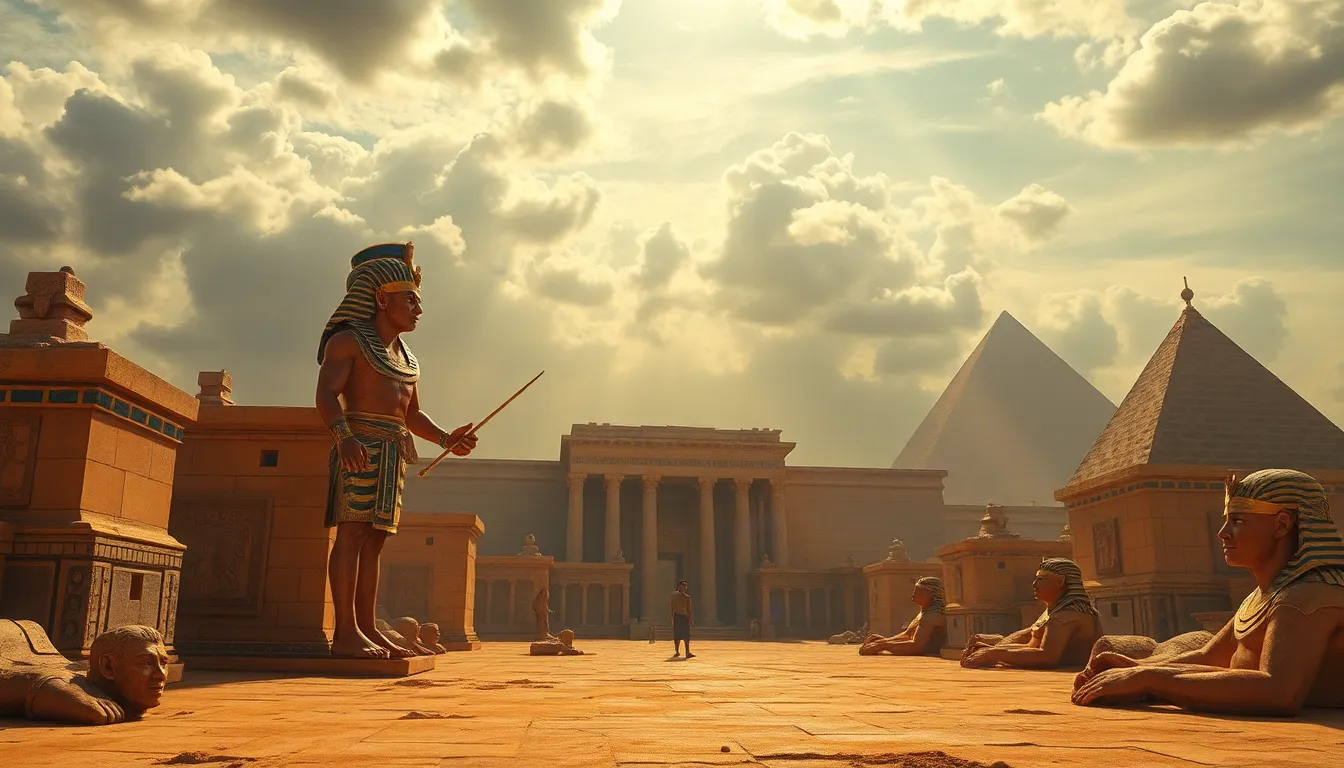The Myths of Pharaoh Merneptah’s Legacy
I. Introduction
Pharaoh Merneptah, the thirteenth ruler of the Nineteenth Dynasty of Egypt, reigned from approximately 1213 to 1203 BCE. His reign marked a significant period in ancient Egyptian history, characterized by both military engagements and cultural developments. Understanding Merneptah’s legacy allows us to appreciate the complexities of Egyptian society during this time and the myths that have arisen around his character and achievements. This article aims to debunk several common myths surrounding Merneptah, providing a clearer picture of his true historical impact.
II. Historical Context of Merneptah’s Reign
To fully grasp the significance of Merneptah’s legacy, it is essential to understand the political landscape of Ancient Egypt during the Nineteenth Dynasty. This era was marked by a powerful centralized government and extensive territorial expansion, but it also faced internal and external challenges.
- The Political Landscape: The Nineteenth Dynasty was a period of great prosperity, but also of conflict, as Egypt sought to maintain its dominance over neighboring regions.
- Merneptah’s Ascension: Merneptah ascended to the throne after the death of his father, Ramses II, known for his monumental achievements. Merneptah was initially a military leader and was not expected to inherit the throne, which adds to the intrigue of his rise to power.
- Major Events and Achievements: His reign included notable military campaigns, notably against the Libyans and the Sea Peoples, as well as efforts to maintain Egypt’s influence in Canaan.
III. The Myth of Merneptah as a Great Military Leader
One of the most persistent myths about Merneptah is his portrayal as a great military leader. While he did engage in military campaigns, the reality is more nuanced.
- Examination of Military Campaigns: Merneptah is credited with several campaigns, particularly against the Libyans, but the extent and significance of these victories are often overstated.
- Analysis of the Merneptah Stele: This stele is a crucial artifact that details his military achievements. It includes references to a people called Israel, marking one of the earliest mentions of the term in historical records.
- Debunking Exaggeration: While the Merneptah Stele celebrates military success, scholars argue that it exaggerates the scale of his victories and does not accurately reflect the challenges he faced.
IV. The Misconception of Merneptah’s Influence on Egyptian Religion
Another common myth is that Merneptah significantly reformed Egyptian religion during his reign. In reality, the religious landscape was largely continuous during this period.
- Overview of Religious Practices: Merneptah ruled during a time when the traditional polytheistic practices were firmly established, with no substantial shifts documented.
- Myths as a Religious Reformer: Some narratives suggest that Merneptah introduced new religious reforms, but evidence supporting such claims is scant.
- Evidence of Continuity: The practices of worship and the pantheon of gods remained stable, indicating that Merneptah did not initiate any significant changes.
V. The Legend of Merneptah as a Builder of Monuments
Merneptah is often celebrated for his contributions to monumental architecture, but this too is shrouded in myth.
- Architectural Contributions: While he did commission some building projects, many monuments attributed to him were actually initiated by his father, Ramses II.
- Role of Predecessors: It is important to recognize the significant contributions of his predecessors in establishing the monumental landscape of Egypt.
- Resource Allocation: Merneptah faced economic challenges that limited his ability to undertake large-scale construction projects, leading to a more restrained approach in his architectural endeavors.
VI. The Myth of Merneptah’s Treatment of the Israelites
The mention of Israel in the Merneptah Stele has led to the belief that he was involved in a significant conflict with the Israelites. However, this interpretation is often oversimplified.
- Overview of Biblical References: The biblical narrative suggests a prolonged conflict between Egypt and the Israelites, which is not substantiated by archaeological evidence from Merneptah’s time.
- Debunking the Narrative: The reference to Israel in the stele is likely to be more of a territorial claim rather than an indication of direct military conflict.
- Historical Context: The mention of Israel reflects the geopolitical landscape of the time, where various groups were vying for power and territory.
VII. The Legacy of Merneptah in Art and Culture
Merneptah’s reign also contributed to the artistic and cultural milieu of ancient Egypt, though myths abound regarding the extent of his influence.
- Artistic Representations: Art from Merneptah’s time often reflects traditional styles and themes, showing continuity rather than innovation.
- Myths of Cultural Advancements: While there were artistic outputs during his reign, attributing major advancements to Merneptah is misleading, as many of the cultural motifs were inherited from previous dynasties.
- Role of Art: The art of Merneptah’s era served to reinforce the established cultural narratives rather than dramatically alter them.
VIII. Conclusion
In summary, the myths surrounding Pharaoh Merneptah’s legacy paint a picture that often exaggerates his military prowess, religious influence, monumental contributions, and interactions with the Israelites. A thorough examination reveals a ruler who, while significant, operated within the constraints of his time and relied heavily on the achievements of those before him.
The importance of historical accuracy cannot be overstated, as it allows us to understand Merneptah’s true place in Egyptian history and the legacy he left behind. Reflecting on these myths reveals not only the complexities of ancient Egyptian history but also the enduring power of narrative in shaping our understanding of the past.
https://www.youtube.com/watch?v=iNNDzptouKY




